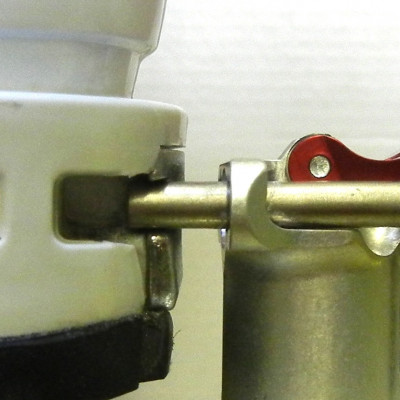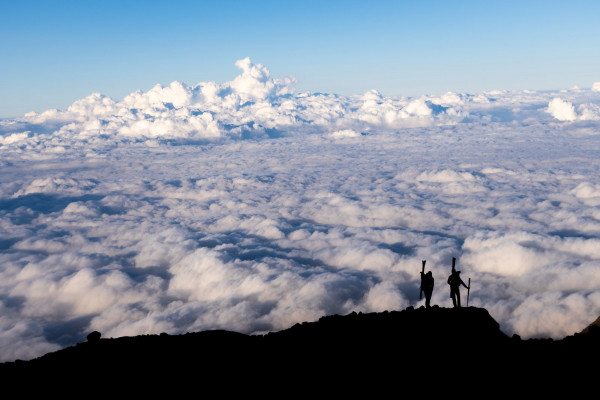11/19/2021 Big Mountain Terrain with Samsara's Billy Haas
At the shop on Dec 4 at 6:45pm, IFMGA guide Billy Haas will be giving a free, in-person presentation on approaching big mountain terrain. Topics include utilizing a decision making framework, selecting the right equipment, and mitigating hazards with technical skills, such as ski belays.
Click Here to register! Space is limited.
This event will also serve as a useful introduction to the curriculum of Samsara’s Big Mountain Snow Safety Program in the Wasatch -- a 4-day course designed to enable advanced skiers to refine and grow their skill sets in complex terrain.
To learn more about this course, we interviewed Billy to get his perspective on what makes this program unique and who stands to benefit from it.
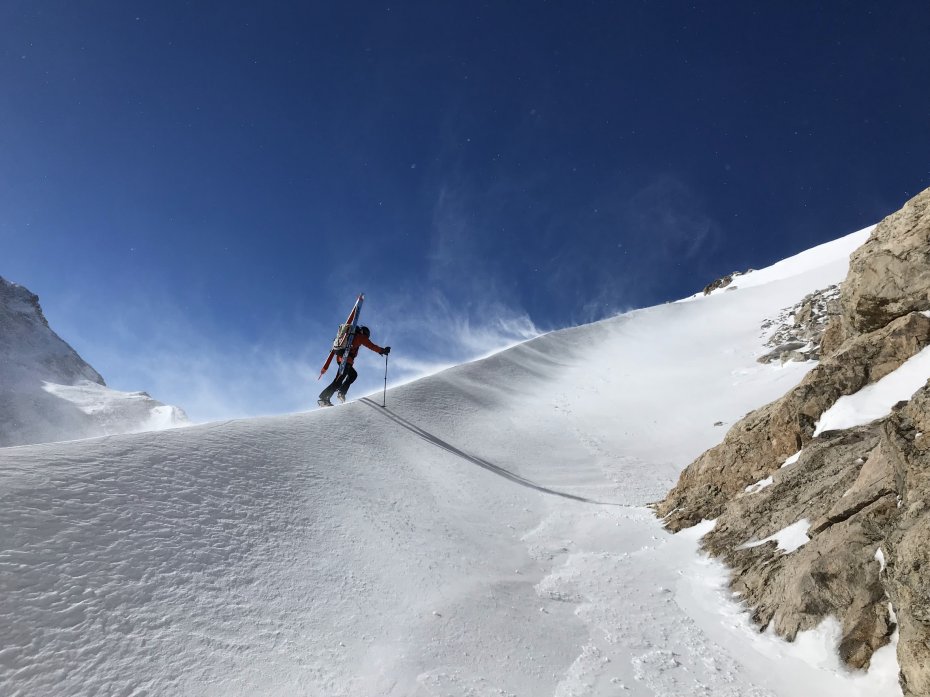
What is the Samsara Big Mountain Snow Safety Program and what do you mean by big mountain terrain?
The BMSS Program is a 4 day (3 days in the field) program, focused on preparing riders for big mountain terrain. The first thing I want to emphasize is that this is not just a high-level avalanche course. The BMSS program is a comprehensive program for approaching big mountain terrain; focusing on mountain travel and decision making, advanced avalanche and risk assessment concepts, and technical systems to help provide security and increase efficiency.
I think it’s also important to describe what we mean by big mountain terrain. Obviously, there is a large spectrum here, from the biggest peaks in the world to big lines in the Wasatch and Tetons. However, for us what separates big mountain terrain from ski touring terrain, is terrain that has more than just the avalanche and other simple backcountry hazards. Steeper, complex, remote terrain where the objective hazard is higher, and movement/fitness, efficiency, and expert decision making are key, all come to mind when we start to define big mountain terrain. This course aims to target that type of terrain. For local reference here in the Wasatch, Monte Cristo Directissimo, NW Couloir of the Pfeifferhorn, NE Face of Lone Peak all come to mind when I think of big mountain terrain.
Who is the BMSS Program intended for?
The BMSS program is intended for advanced riders who are either looking to take their skiing or snowboarding into big mountain, potentially remote terrain, or for riders who already operating in big terrain, but want to refine and grow their skillset. We have recommendations for what we consider to be minimum requirements for applying for the course, and that should help students who are looking to apply see if the BMSS Program would be a good fit.
What makes the BMSS Program unique compared to other courses?
I’ve been an educator in the backcountry ski world from recreational avalanche courses to the highest-level professional courses, and what gets me excited about this course is that it fills a gap where traditional recreational mountain education ends, but the professional courses don’t cover (i.e. this isn’t a guiding course). What makes this course unique is that, while we do have a great curriculum, the heart and soul of this course is more of a mindset and philosophy. What we present is a set of ideas on how to move through the mountains safely but efficiently, where instead of rules we present guidelines, and every course is unique for the crew that we are working with. I’ve never been a part of a course such as this, and feel as if the BMSS program has been a long time coming.
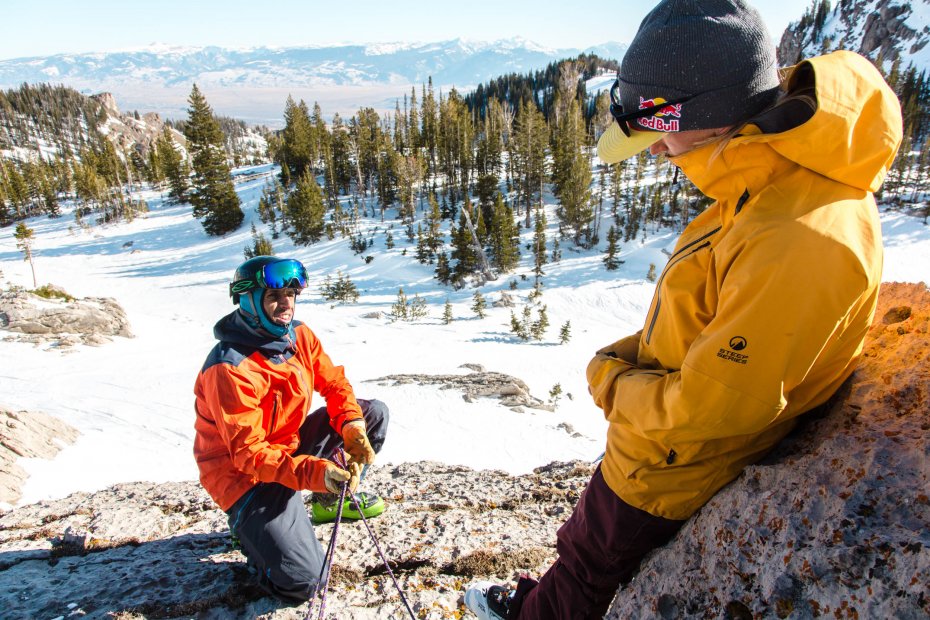
The description says the course is student-led. What does that mean, and why is the program set up that way?
To me, this is another aspect that makes this program unique. What we mean here, is that this isn’t just a “here’s how to do it, now replicate” course. As an instructor, I don’t intend to be out front making decisions for the crew. Of course, there will be plenty of time when the instructor will be introducing and demonstrating techniques and concepts, but our hope is for all the mountain travel to be led by the students. What we want is for students to be in the lead, experiencing the terrain from the proverbial sharp end, while as an instructor we are giving insight and feedback from the middle of the pack. It’s our belief that, in this kind of terrain, you and your crew learn best by being out front making the decisions.
The course is designed for groups or “crews” of ski touring partners. Why is it structured this way and what are the benefits of this? For those wondering, can an individual take the course alone or do they have to have their partners with them?
Right now, we are only offering this BMSS to small groups and not to individuals. We’ve thought hard about this, and part of our reasoning is that an important outcome of the program is to build teamwork and camaraderie amongst the crew. We understand that whoever you take the course with, will most likely be the people you will be skiing big mountain terrain with. Good mountain partnerships are a special thing, and part of this program is to foster that. Take me for example, I do most of my skiing with my friend from 1st grade, and I realize I’m super fortunate to have that.
For the BMSS there is an application process. Why do you require an application and what are the benefits of this approach?
This isn’t meant to make this course exclusive, what the application process is intended for is to make sure that the right students are signing up for the right programs. For any program that enters higher consequence terrain, and deals with more advanced concepts, you need to make sure students are prepared for that. The benefit to students of an application is that it allows us to see where a potential student is at, and to make sure that they are ready for this course. We still believe in and encourage traditional avalanche education and other mountain courses. In fact, one of our prerequisites is that students have taken A3 approved recreational Level 1 & 2 or equivalent courses, this isn’t an alternative for that.
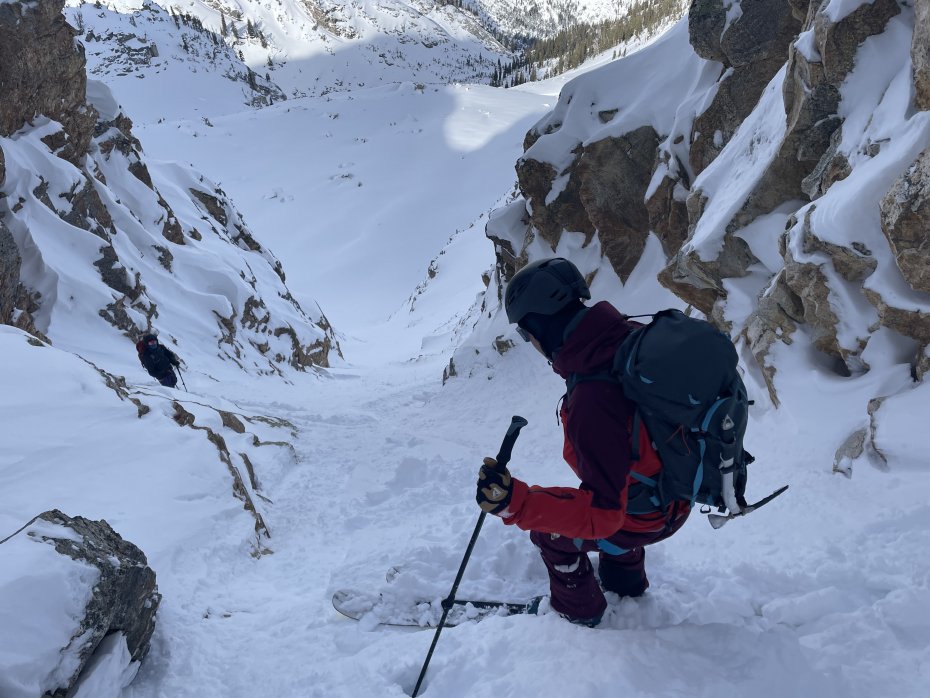
Why run this course in the Wasatch, and what kind of terrain will the course take place in?
I love the Wasatch and have used it as my training ground for preparing for bigger, more remote mountains all over the world for a long time. The obvious advantage we have in the Wasatch is ease of access. Time is a limitation, and the ability for us to get into big terrain quickly is imperative for accomplishing all that we want to in the program. Also, the reliability of conditions and variety of terrain the Wasatch offers, makes it another high-quality place for a training ground. The intention of the course is to be in big terrain, so I personally think any and all terrain in the central Wasatch is possible in the program. On some days we’d ideally drop multiple lines, and on others we’d focus more on a single big objective. For example, in previous programs we have used terrain from Wolverine Cirque and chutes in the Alta/Brighton periphery, to the South Face of Superior and the Heart of Darkness, to the Pfeifferhorn.
Aside from hard skills, what do you hope skiers will walk away with after the course and why is that important to big mountain skiing?
One outcome I’ve already mentioned, and that is for the crew of skiers to grow their relationship as backcountry partners. That’s huge. Another outcome, is to show students a process for approaching big mountain terrain, and to have them refine their own unique mindset for this. Call it style if you want. It’s not my intention to get everyone to move through the mountains in the exact way that I do. Every rider and every crew have their own style, and when you approach big mountains, I believe it’s important to understand who you are, why you want to do what you want to do, and how do you do it best. Then there’s a huge part of me that wants my students to leave the BMSS Program with the motivation, confidence, but more importantly the humility to get after it.
As a guide, how do you feel about teaching this course? What are you personally looking forward to most?
Common wisdom, or a self-serving business mindset, would think that as a guide it would be in my best interest to keep what is taught in this course to myself. But that’s not why I became a mountain guide, and that’s not what I want for this community. Teaching this course is about taking the experience and knowledge I’ve been so fortunate to acquire over my time in the mountains, share it with other skiers, and help them build their ability to move through the mountains safely, with style, and humility. What I’m looking forward to most is seeing the success and adventure that students of the BMSS will have after having completed the program. The most satisfying thing for me is seeing someone who I’ve had the privilege of working with, have success in the mountains.
Find out more information and apply for the course at https://samsaraexperience.com/snow-safety/big-mountain-snow-safety-program/
---
Billy was raised in the Northeast, but cut his teeth in the Wasatch. He is an internationally-certified IFMGA mountain guide, and splits time between Jackson Hole, Wyoming and Salt Lake City, Utah. In addition to guiding, Billy is a professional avalanche instructor and forecaster.
“Technical, human-powered climbing and skiing in big mountains is what I love,” he says. “I have been fortunate to experience some of the greatest mountain ranges in the world, which have been the forging ground for the mindset and skills that I share in the Big Mountain Snow Safety Course.”
Comments
